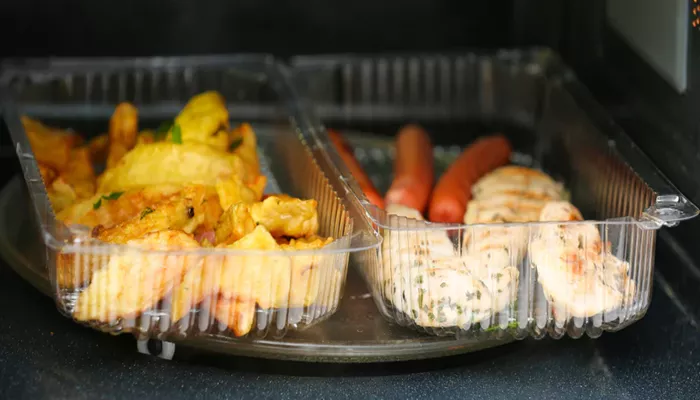A recent lawsuit is challenging the safety claims of Ziploc’s “microwave safe” label. The suit says microwaving plastic bags and containers can increase exposure to microplastics, tiny plastic particles that may harm health.
Microplastics are tiny pieces of broken-down plastic, smaller than 5 millimeters. These particles come from larger plastics that degrade over time. We encounter microplastics in the food we eat, the water we drink, and even the air we breathe.
Studies show these particles can build up inside our bodies. One study found the human brain may contain microplastics equal to the size of a plastic spoon.
Scientists are still studying the health effects of microplastics, but early research is worrying. Dr. Katie Pelch, a senior scientist at the National Resources Defense Council, says microplastics may harm the digestive, respiratory, and reproductive systems. They might also increase the risk of certain cancers. Other research points to possible effects on the brain and heart.
The lawsuit claims that Ziploc products mislead customers by not warning that microwaving or freezing these plastics could release harmful microplastics. It argues that these products are not truly safe for microwave or freezer use. S.C. Johnson, the maker of Ziploc, denies the claim, saying their products are safe if used as directed.
Research supports concerns about microwaving plastic. A 2023 study showed that heating polypropylene containers in the microwave for just three minutes released millions of microplastic particles into the food. Storing food in plastic at room temperature also released microplastics but at a much lower rate.
Freezing plastic may also increase microplastic release. Dr. Carmen Marsit from Emory University explains that freezing can make plastic brittle, causing more particles to shed into food.
Microwaving plastic may also cause harmful chemicals to leach into food. Chemicals like PFAS, phthalates, and BPA are common in plastics and have been linked to cancer, immune problems, and developmental delays. When plastic gets soft or warped in the microwave, it’s a sign that chemicals may be leaking into your food.
Even “microwave safe” plastics can release microplastics and chemicals, experts say. The label only means the container won’t melt or catch fire, not that it’s free from other risks.
Avoiding all plastic use is tough, but experts suggest easy changes in the kitchen. Use glass or ceramic containers for heating or freezing food. Stainless steel works well in the freezer but not the microwave. If you use plastic lids on glass containers, remove the lid before microwaving.
Dr. Pelch also advises swapping out plastic cutting boards and blender pitchers. Be cautious with nonstick cookware, which often contains PFAS chemicals that can wear off into food.
While avoiding plastics completely is nearly impossible, it’s wise to reduce how much plastic touches your food, especially during heating or freezing.


